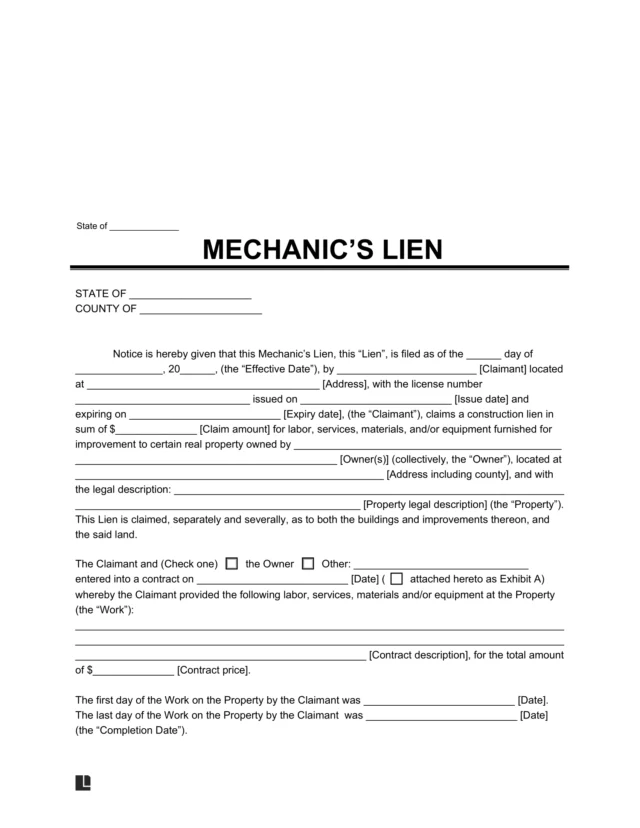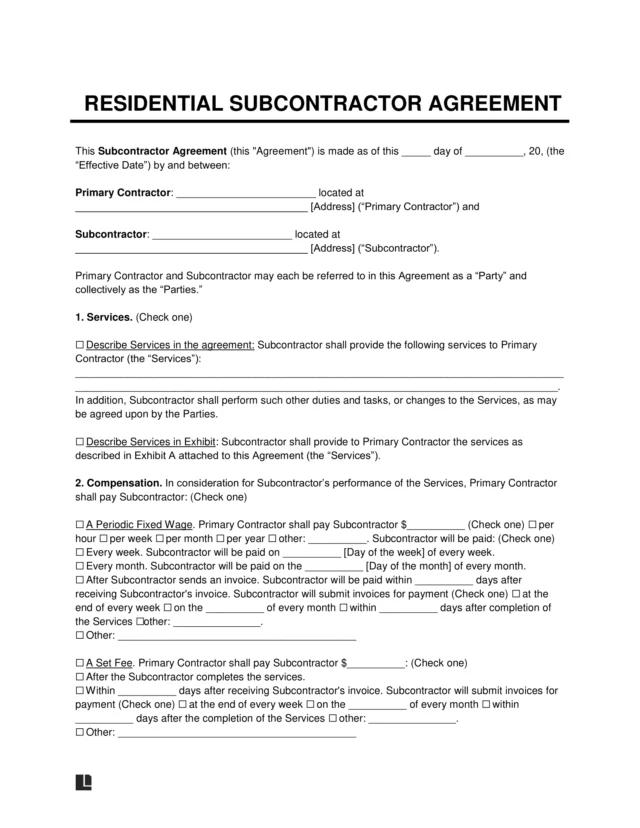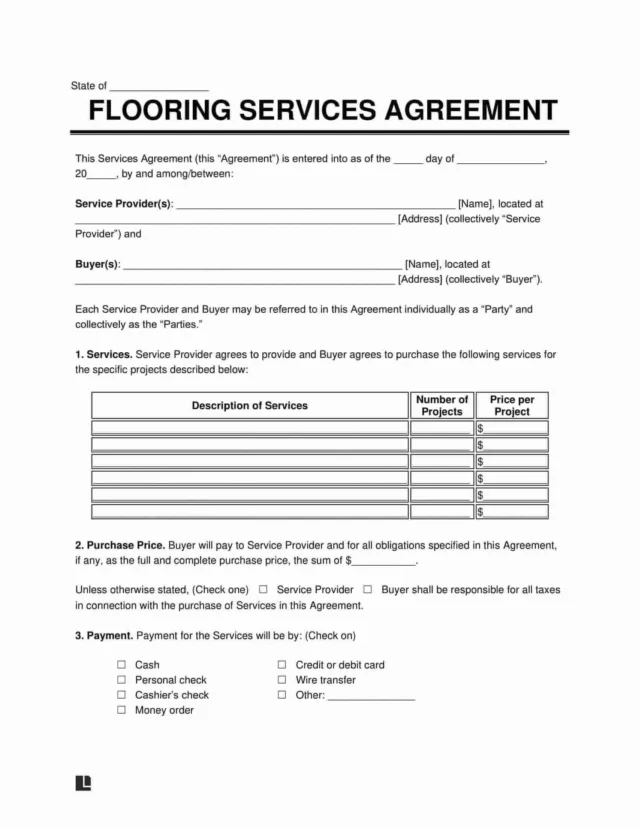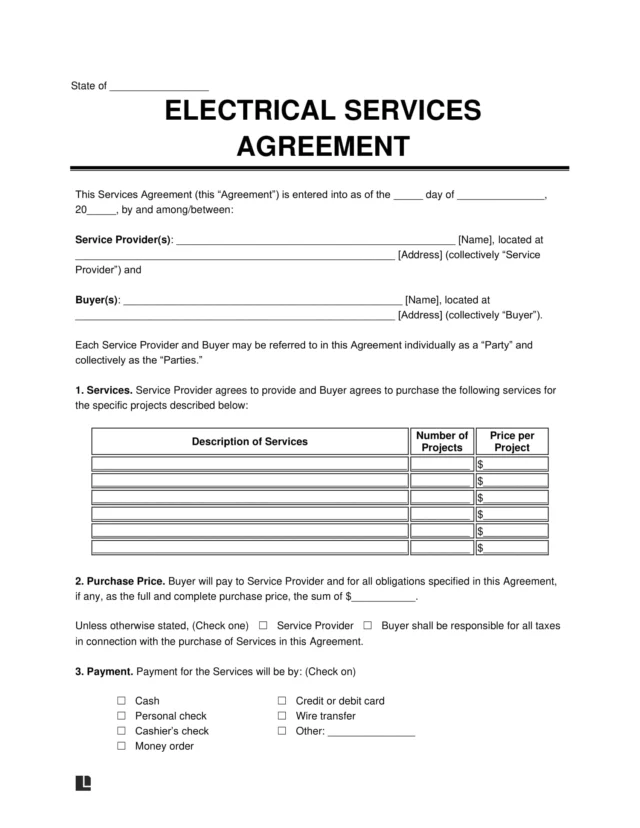What Is a Remodeling Contract?
A remodeling contract is a legally binding agreement between a homeowner (or property owner) and a contractor who will perform home improvement services. These services can include any renovation, repair, or construction project for an existing residence.
Remodeling contracts safeguard your rights when remodeling a client’s home or property. They contain essential legal provisions that protect you from liability and establish clear guidelines with your customers.
What Is Remodeling?
Remodeling is the process of making significant alterations to an existing building or structure. The transformation that results from remodeling improves a space’s aesthetics and/or functionality. Remodeling may involve enlarging existing rooms, adding or removing walls, or overhauling a room’s layout.
Some specific examples of remodeling projects include the following:
- Adding a new bathroom to a home
- Constructing a guest house or an in-law suite
- Adding a breakfast nook or an island to a kitchen
- Replacing a walk-in shower with a bathtub
Why Use a Remodeling Contract?
Whether performing a small job or major construction, writing a remodeling agreement will provide the following benefits:
- Establish a Clear Scope of Work: A remodeling contract establishes a clear scope of work that both parties agree to. This way, you’ll understand your expectations as the remodeling contractor.
- Defines the Terms and Conditions: A home improvement contract also defines the terms and conditions under which you’ll work, including the materials, project timelines, payment schedules, project milestones, and penalties/bonuses for completing the work early.
- Provides Legal Protection: This document is a legal and binding contract that defines the contractor’s and property owner’s obligations and responsibilities. Establishing this relationship beforehand minimizes the risk of misunderstandings or disputes later.
- Controls Costs: This contract promotes transparency and provides a clear breakdown of associated costs, including permits, materials, and labor. This openness lets the client control their budget and avoid unexpected costs.
- Promotes Quality Assurance: A detailed contract defines each party’s specifications and expectations, ensuring the work meets the agreed-upon quality standards.
- Establishes Procedures for Changes/Adjustments: If a client proposes changes to the original scope of work, a remodeling contract provides guidelines on how to navigate these changes and states whether they’re allowed.
The Process for Remodeling
While each remodeling job has unique considerations, you can explore a general overview of the stages within the remodeling process:
Planning and Permitting
The first stage involves a meeting between the independent contractor and the client. The client will share their needs and preferences, and the contractor will provide their input to ensure the client’s ideas are realistic.
The independent contractor may also collaborate with a designer or architect to develop a feasible plan and ensure that they adhere to building codes.
Do I Need a Permit to Remodel?
It depends. Each jurisdiction has different guidelines when determining whether a contractor needs a building permit. It’s advisable to check with your city or county’s building and permits department.
A general rule of thumb is that more extensive changes that can present issues with structural integrity will require a building permit. For example, modifying load-bearing walls or changing a home’s floor plan will require a permit in most instances.
Demolition and Preparation
Depending on the project’s scope, the contractor may have to perform demolition to remove existing fixtures, walls, and structures. This demolition helps them make space for replacements or modifications. Once they demolish the appropriate elements, they can prepare the space to begin the client’s desired work.
Structural Work
Structural work refers to modifying the building’s structures. For example, the contractor may perform foundation, roofing, or framing work to accommodate the new design or layout.
Mechanical Work
Mechanical work refers to the installation or repair of a structure’s mechanical systems. It may involve upgrading or rerouting electrical wiring, fire protection systems, HVAC systems, and plumbing systems.
Fixture Installation
At this point in the remodeling process, the contractor installs new fixtures and finishes to increase the space’s practical elements and decorative appeal. For example, they may install new flooring, lighting fixtures, appliances, countertops, and cabinets.
Painting and Finishing Touches
The contractor applies wallpaper or paint and other finishing touches to the surfaces and walls to complete the space’s aesthetics.
Inspections and Approvals
Depending on the regulations in your area, the space may have to undergo inspections at different stages of the remodeling project. This way, inspectors can ensure that the contractor complies with safety standards and building codes.
Once the contractor receives final approval from local inspectors, they can issue an invoice for their work and present the finished product to the property owner.
What to Include in a Remodeling Contract
There are specific vital provisions you should include in your remodel contract. These include the following:
- Date and Jurisdiction: The contract should clearly state when the parties signed it and the jurisdiction in which they signed it.
- Party Information: The contract should state the parties’ names, addresses, business names, and any official titles, if applicable. This information identifies who is bound to the agreement.
-
Description of Remodeling Services: The remodeling agreement should describe the services the contractor will provide the client. This may include:
- What work they will do
- Where they will perform the work
- The start and end dates for the contractor’s services
- Specific details about the work and the final product
- Design services, if any
-
Payment Details: Include these payment details:
- The price of work and how it will be calculated
- The payment schedule for the services, including how and when the client will make the required payments
- What happens if the contractor can’t complete the expected work on time due to factors outside the contractor’s control
-
Legal Clauses: Include legal clauses, such as those that address these topics
- Whether either party can assign their rights under the contract to a third party
- The process for making amendments to the agreement
- The dispute resolution process that the parties will use to resolve issues
- Whether the independent contractor will be liable for damages arising out of the agreement
- What happens when either party commits a material breach in the agreement
- How the parties will deliver a written notice to one another when they need to convey something about the agreement
- Signature Section: To be enforceable, a valid written agreement must be signed by both the contractor and the client. The home improvement agreement should include an area for the parties’ printed names and signatures.
Remodeling Contract Sample
Download a free remodeling contract template in PDF or Word format below:
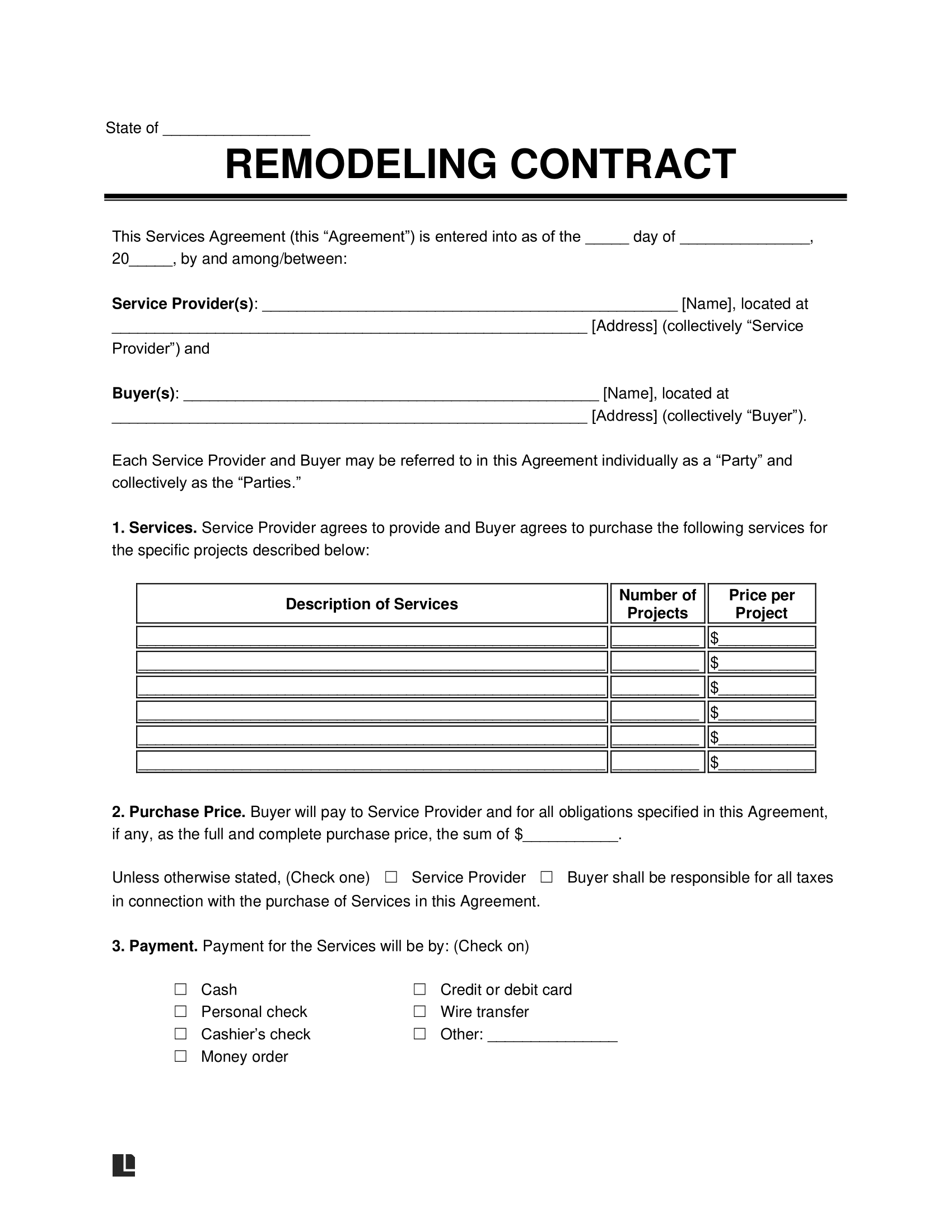
Frequently Asked Questions
Can I cancel a remodeling contract?
You might be able to cancel the entire agreement, depending on the situation. Refer to the original agreement for cancellation provisions, including permissible reasons and cancellation penalties.
Please negotiate cancellation with the client rather than doing so unilaterally. Consult an attorney before terminating a contract to protect yourself from legal issues.
What’s the difference between remodeling and renovating?
While contractors may use the terms remodeling and renovation interchangeably, they have distinct meanings:
- Remodeling: Remodeling is the process of making large-scale changes to a space’s layout or structure. It may involve adding new features or changing the floor plan, resulting in a drastic change in the area’s appearance or functionality.
- Renovating: Renovating is repairing or restoring a space to enhance its condition or functionality. Unlike remodeling, it doesn’t involve changing the space’s structure or layout.
Please note that renovation can be an aspect of the remodeling process.


